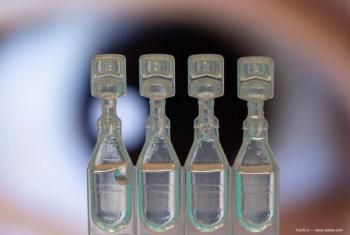
Speaker suggests ways to reduce post-LASIK ectasia
"Reported cases of ectasia have been diagnosed up to 4 years after LASIK," said R. Doyle Stulting, MD, PhD, during a symposium on ectatic diseases in corneal and refractive surgery.
"Reported cases of ectasia have been diagnosed up to 4 years after LASIK," said R. Doyle Stulting, MD, PhD, during a symposium on ectatic diseases in corneal and refractive surgery.
"Pathology suggests cell loss and abnormalities of keratocytes, leaving us to wonder whether defective keratocyte metabolism could make ectasia more likely and to wonder whether mitomycin C might increase the long-term risk of ectasia," said Dr. Stulting, a professor of ophthalmology and director of the cornea, external diseases and refractive surgery section at the Emory Eye Center, Atlanta.
To reduce the incidence of post-LASIK ectasia, he said, patients should be screened carefully based on probable and possible risk factors such as forme fruste keratoconus, low corneal thickness and residual stromal bed, young age, changing refraction, and eye rubbing.
"Increased communication amongst refractive surgeons, scientifically based multifactorial scales for evaluating risks, and prospective trials for borderline cases are indicated," he said. "We need basic investigations of keratocyte function and intervention for eyes with abnormal elasticity."
Dr. Stulting is the project director for an ectasia registry, ectasiaregistry.com, that is about to be launched through a collaboration of the American Society of Cataract and Refractive Surgery; Clinical Research Consultants Inc.; and DSG Inc. Dr. Stulting, the chairman of the ASCRS Refractive Committee, encouraged symposium attendees to begin entering data when possible to help identify current patients at risk and also to identify investigators who might be willing to participate in prospective clinical trials in the future.
Dr. Stulting has no financial interest in any products or companies related to his talk.
Newsletter
Don’t miss out—get Ophthalmology Times updates on the latest clinical advancements and expert interviews, straight to your inbox.














































.png)


